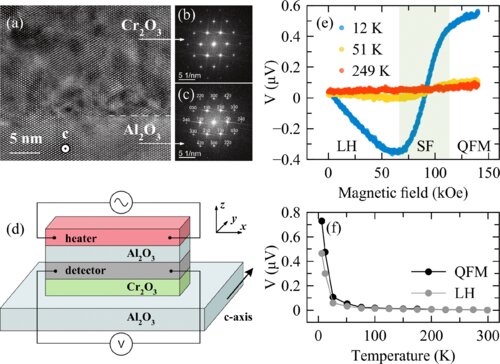
Antiferromagnets have zero net magnetization and are insensitive to external magnetic field perturbations. Antiferromagnetic spintronic devices hold great promise for creating future ultrafast and energy-efficient information storage, processing, and transmission platforms, potentially leading to faster and more energy-efficient computers.
But to be useful for applications impacting everyday life, the devices need to be able to operate at room temperature. One of the key ingredients in realizing antiferromagnetic spintronics is the injection of spin current at the antiferromagnetic interface. Previously, efficient spin injection at these interfaces was realized at cryogenic temperatures.
A team led by Igor Barsukov at the University of California, Riverside, in collaboration with researchers at Helmholtz-Zentrum Dresden-Rossendorf, the University of Utah, and the University of California, Irvine, has now demonstrated efficient spin transport in an antiferromagnet/ferromagnet hybrid that remains robust up to room temperature. The researchers observed coupling of magnonic subsystems in the antiferromagnet and ferromagnet and recognized its importance in spin transport, a key process in the operation of spin-based devices.
The study appears in Physical Review Research.
“Our results bridge spin-orbitronic phenomena of ferromagnetic metals with antiferromagnetic spintronics and demonstrate a significant advancement toward the realization of room temperature antiferromagnetic spintronics devices,” said Barsukov, an assistant professor of physics and astronomy.
Barsukov was joined in the research by Rodolfo Rodriguez, Shirash Regmi, Hantao Zhang, Wei Yuan, Jing Shi, and Ran Cheng of UCR; Pavlo Makushko, Ihor Veremchuk, René Hübner, and Denys Makarov of Helmholtz-Zentrum Dresden-Rossendorf; and Eric A. Montoya of the University of Utah and formerly of UC Irvine. https://insideucr.ucr.edu/stories/2022/08/23/antiferromagnetic-hybrids-achieve-important-functionality-spintronic







Recent Comments